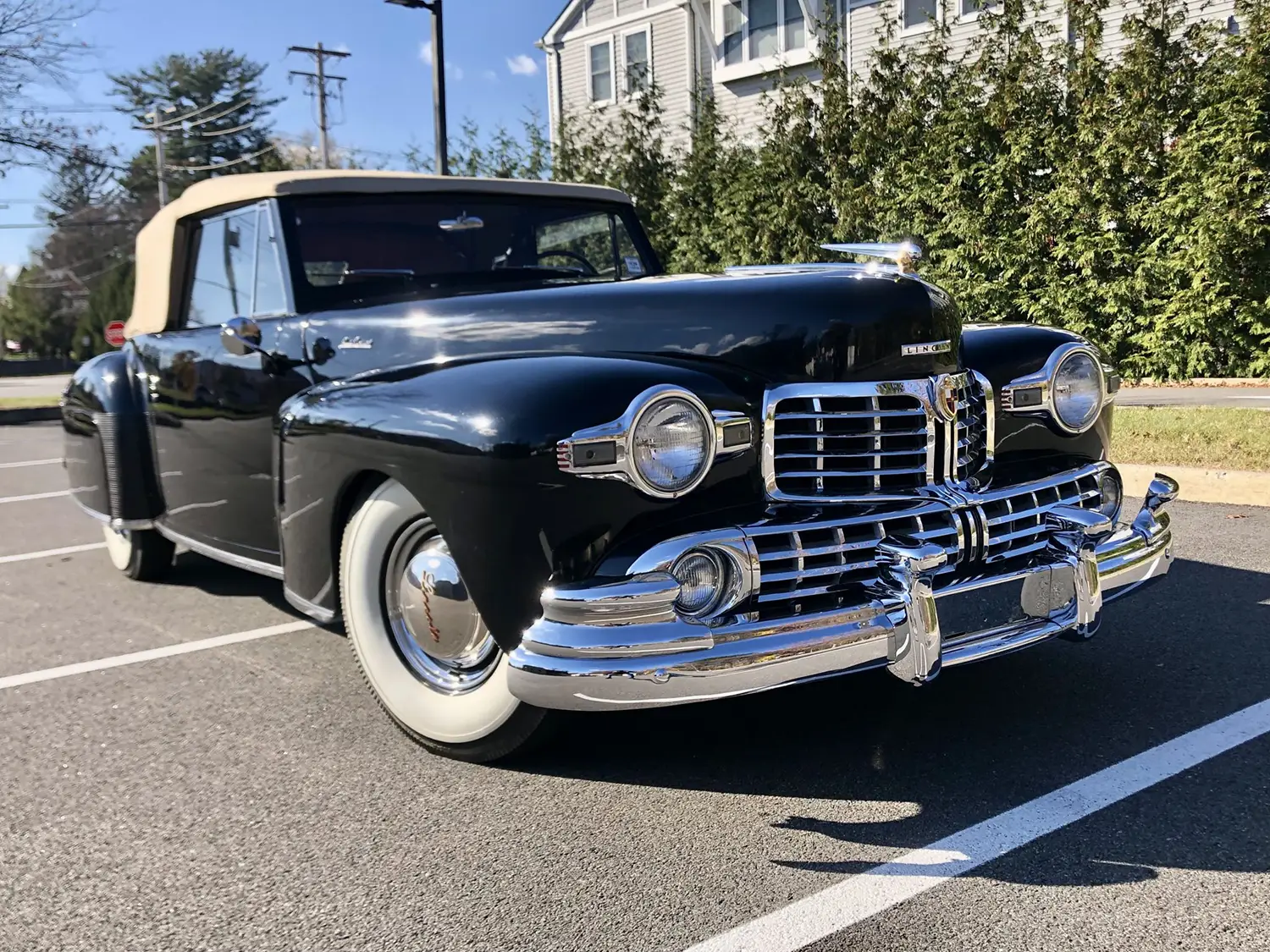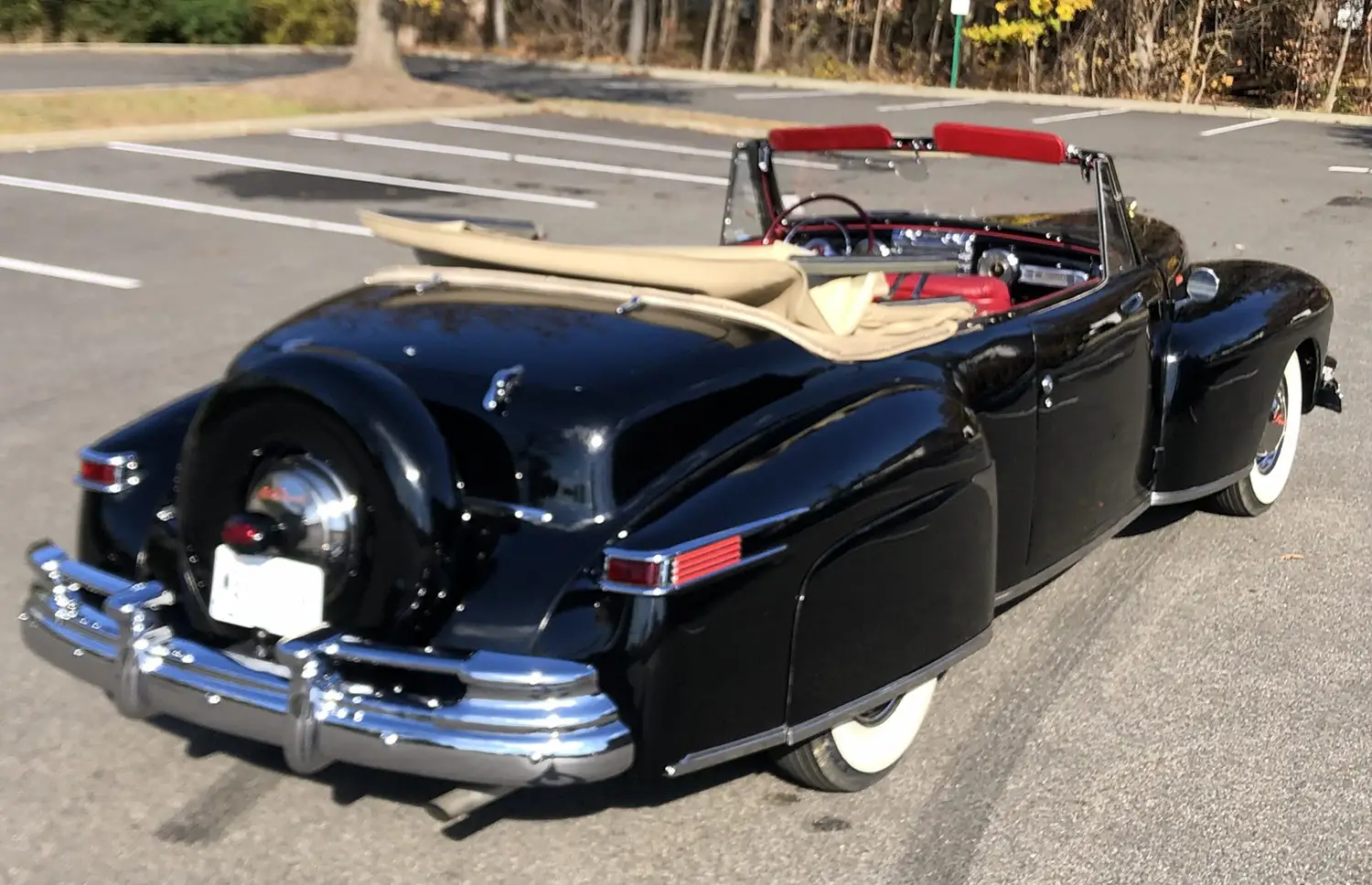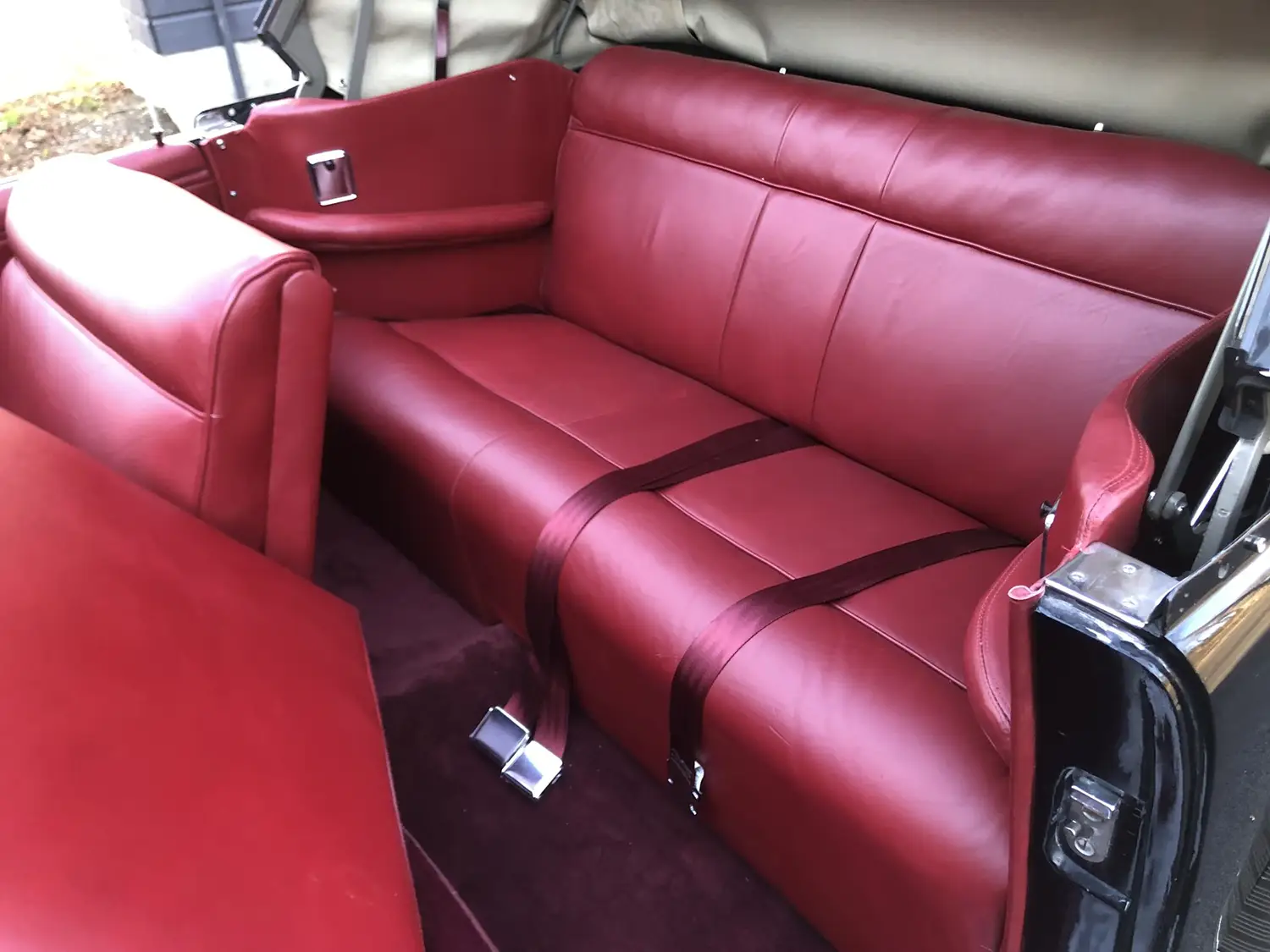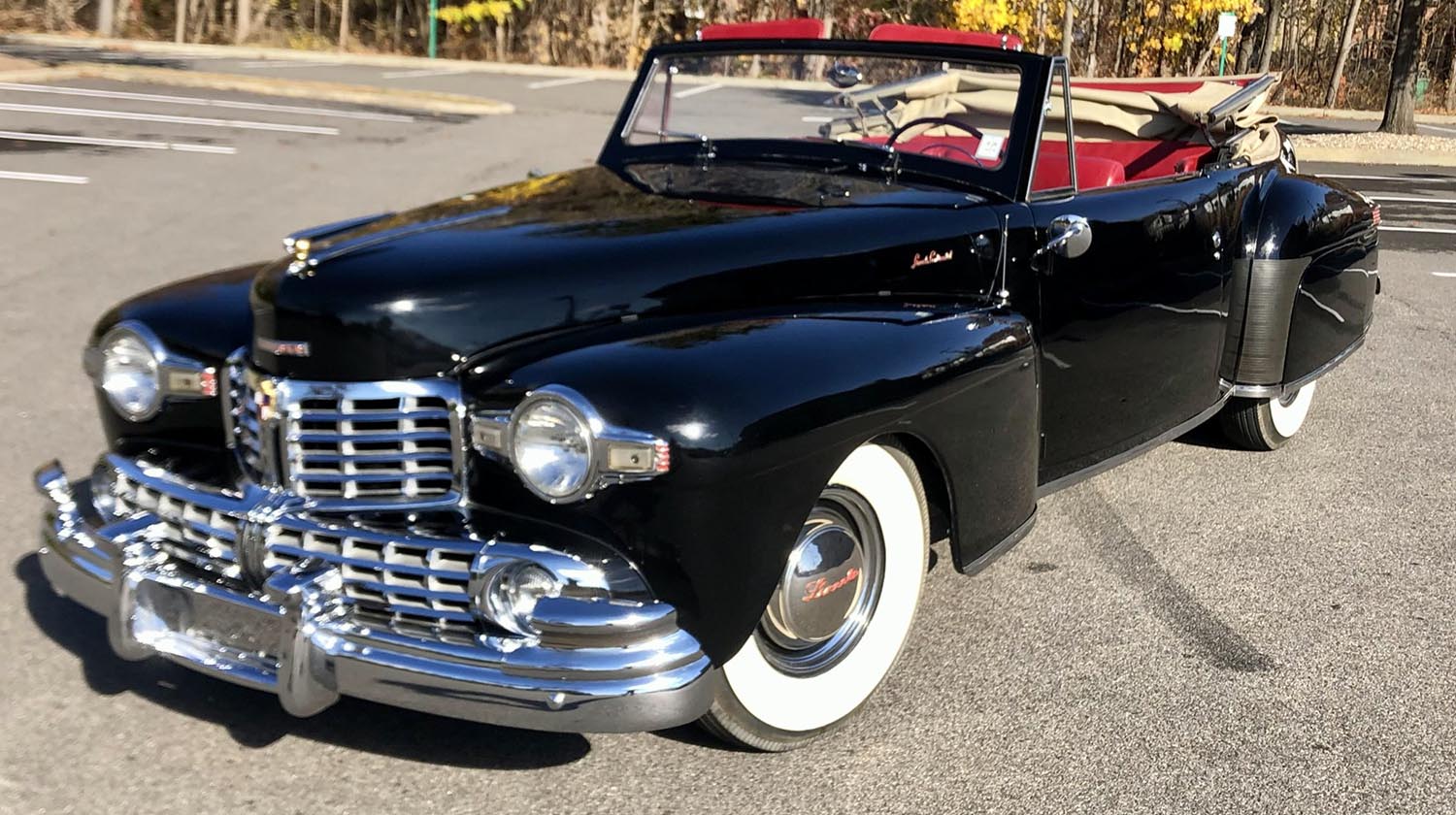
The 1948 Lincoln Continental is significant because it marks the conclusion of an automotive era. It was the final American production car fitted with a V12 engine, making it historically important. The Continental’s long, low silhouette and iconic rear spare-tire carrier, the “Continental kit”, defined its high-end, transatlantic styling. This handsome cabriolet remains a benchmark for post-war American elegance and luxury motoring.
Edsel Ford’s Lasting Design Legacy
The Continental design originated with Edsel Ford’s personal 1939 vacation car, penned by Chief Stylist Bob Gregorie. The result was a sleek, low-slung convertible based on the Lincoln-Zephyr chassis. This car quickly impressed Ford’s wealthy friends, leading to its limited production. By 1948, the Continental was recognized by the Classic Car Club of America.

Distinctive Styling and Classic Features
This generation of Continental is instantly recognizable due to its European-influenced proportions. The car has an exceptionally long hood and a passenger compartment pushed rearward. The exterior is finished in a timeless black paint, a result of a refurbishment around the year 2000. Features like rear fender skirts and chrome bumpers with overriders enhance the luxurious appearance.
The Unique Heart: Lincoln’s V12 Engine
The most compelling technical feature is the 292ci flathead V12 engine. This engine was derived from the earlier Lincoln-Zephyr V12, utilizing a narrow 75-degree bank angle. The V12 configuration provides an incredibly smooth, balanced operation. This design made the engine quieter and more refined than the V8s common at the time.
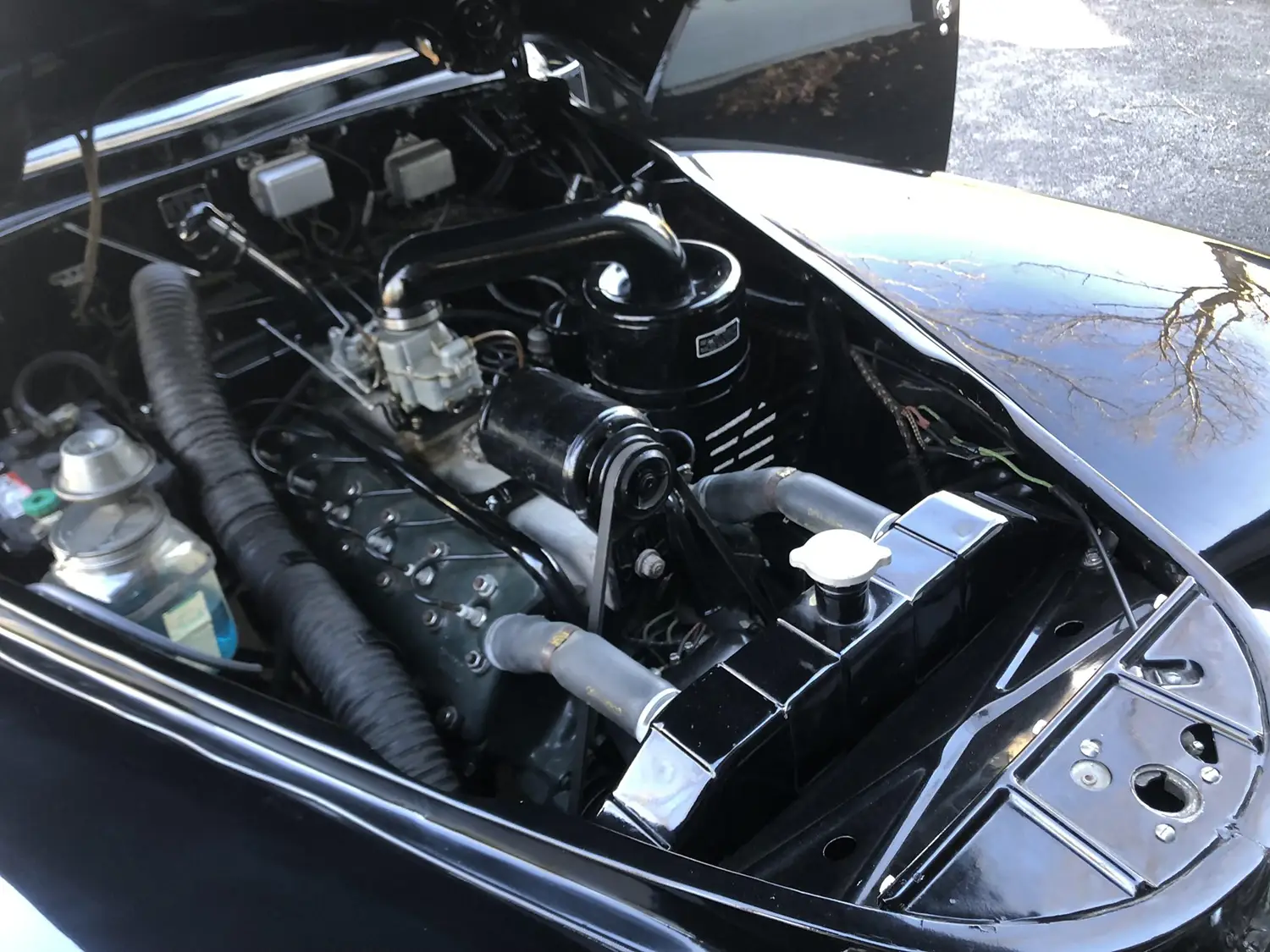
Recent Mechanical Attention
Keeping a classic V12 running smoothly requires specialized care and attention. The seller has focused on mechanical integrity since acquiring the car in 2025. Work performed involved a comprehensive overhaul of the critical fuel and ignition systems. The six-volt battery was replaced, and the brakes were cleaned and adjusted recently.
Luxurious Appointments in the Cabriolet
The interior presents a striking contrast to the exterior with its red leather upholstery. The cabin reflects the car’s top-tier status, prioritizing comfort and style. The refurbished interior features split front and solid rear bench seats. This classic includes hydraulically operated power windows, a true luxury feature for the late 1940s.

Cockpit and Driver Experience
The driver’s cockpit includes a painted, body-color dashboard with bright metal trim. Instrumentation consists of a 110-mph speedometer and gauges for essential functions like oil pressure and water temperature. A three-speed manual transmission is controlled via a column-mounted shifter. The car rides on bias-ply whitewall tires mounted on 15-inch steel wheels.

Power, Engine Specs, and Performance
The 292ci flathead V12 engine was factory rated at 125 horsepower. The motor produces a smooth delivery of power suitable for comfortable long-distance touring. This refinement was the V12’s main selling point, not raw speed. The power is transmitted to the rear wheels via a robust three-speed manual transmission. Stopping duties are handled by hydraulically assisted four-wheel drum brakes, typical for the period.

The 1948 Lincoln Continental Cabriolet holds a distinguished position in collector circles. This particular model, a limited-production cabriolet, benefits from a refurbishment and recent essential maintenance. Its elegant styling, coupled with the final American V12 engine, ensures its status as a “Full Classic” automobile. It is a luxurious piece of automotive history built for smooth, stately enjoyment.
Disclaimer: Content on this site is for informational and entertainment purposes only. Details, analyses, and opinions reflect current trends and personal views, not professional or financial advice. Always verify information with official sources before making any decisions.
Source: bringatrailer.com
